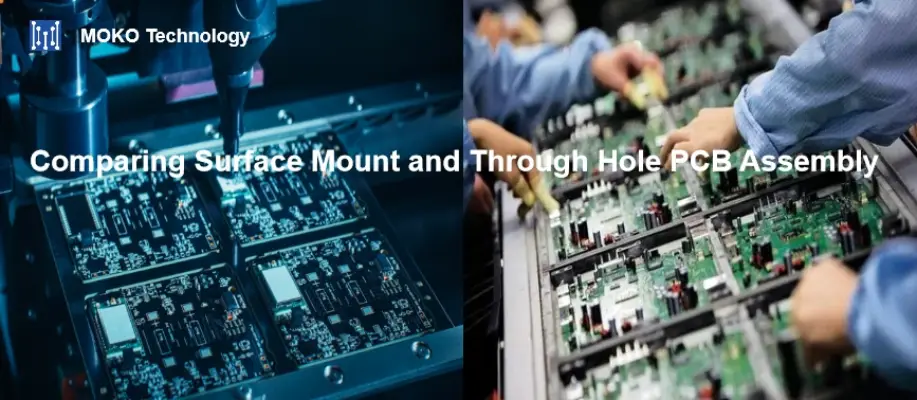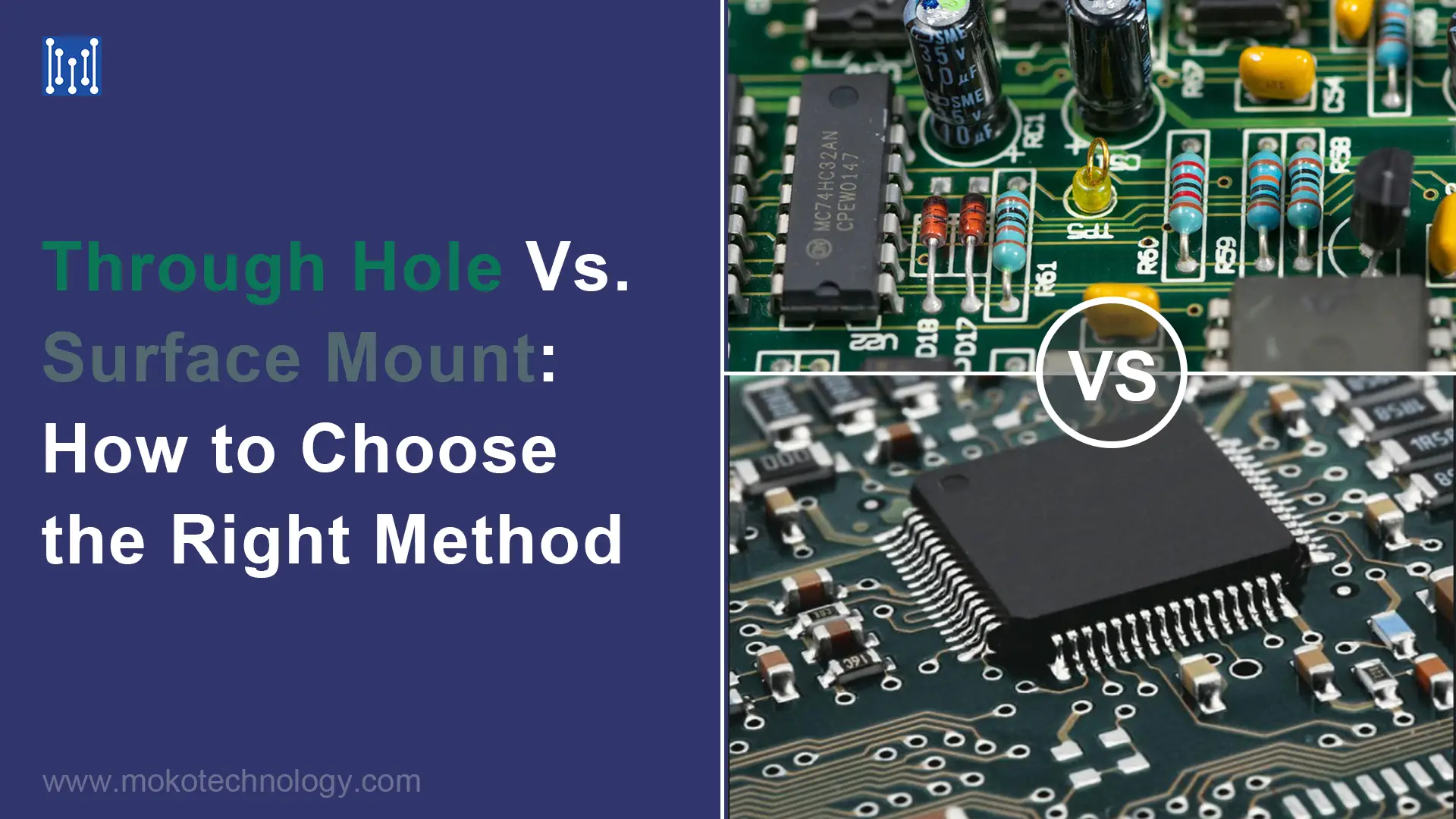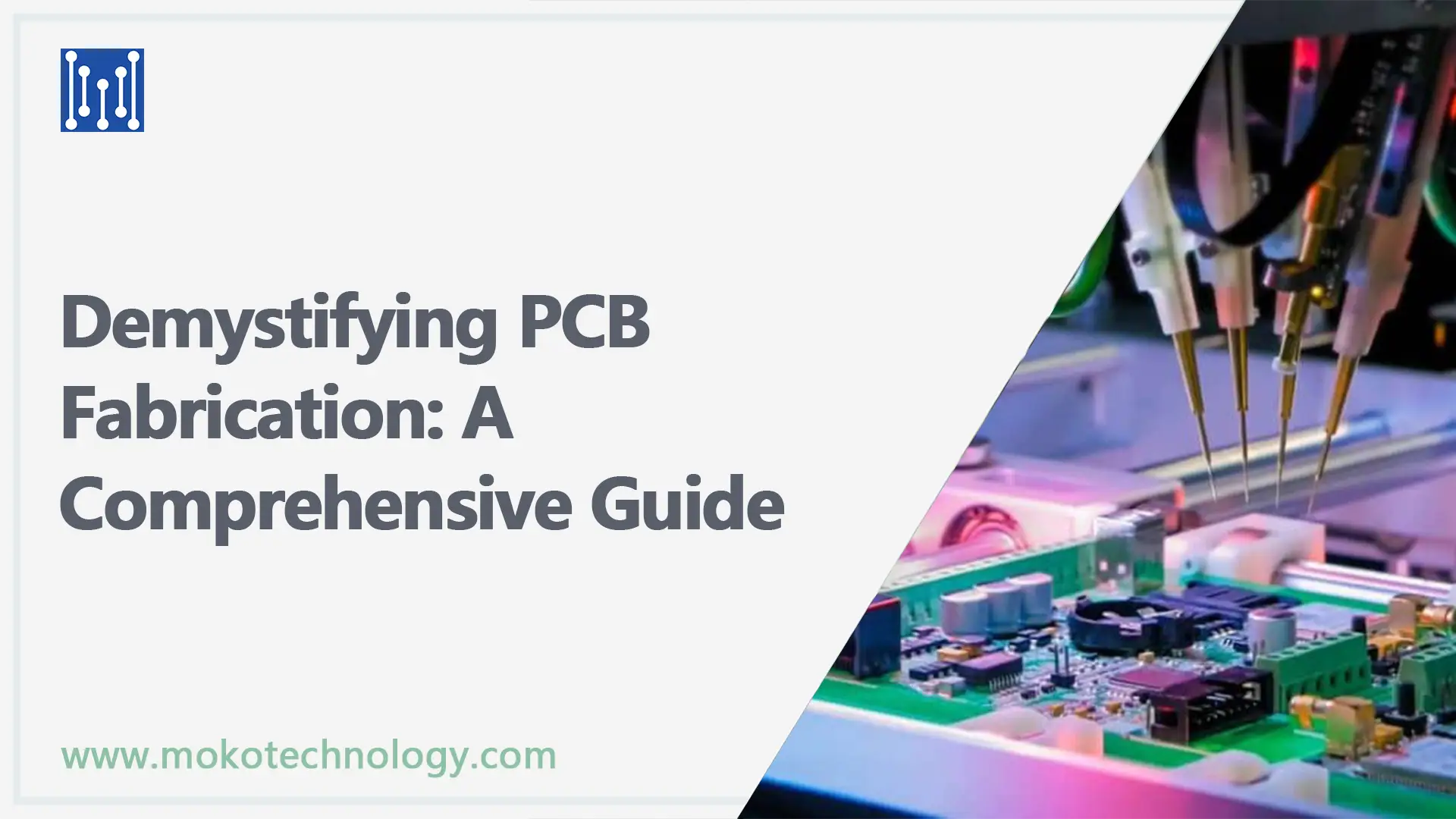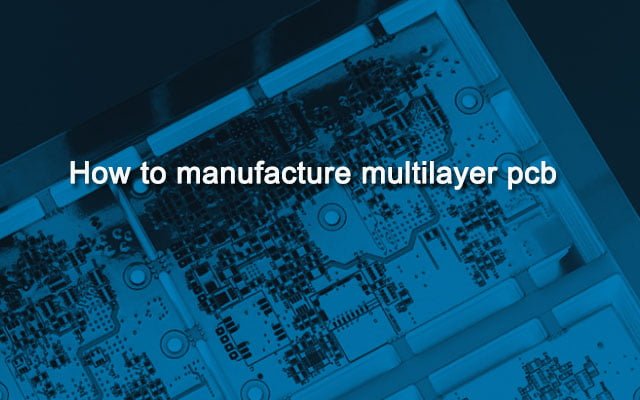When assembling printed circuit boards, engineers have two main techniques to choose from: through hole and Surface Mount technologie (SMT). Vroeger, we behandelden componenten met lange leads door ze handmatig in geplateerde doorlopende gaten op de printplaat te steken. Vervolgens hebben we de draden gesoldeerd om sterke verbindingen met de gaten te vormen. Dit is wat we kennen als een PCB-montage met doorlopende gaten. Met het verstrijken van de tijd, fabrikanten geven er de voorkeur aan om een moderne montagemethode te gebruiken die vertrouwt op componenten waarvan de kabels alleen aan het oppervlak van de printplaat zijn bevestigd. Deze methode vereist geen pasgat. Dit is wat we kennen als de Surface Mount-technologie. Vandaag zullen we beide technieken bekijken en we zullen u helpen bij het kiezen tussen beide op basis van uw behoeften.
Through Hole Assembly
Through hole assembly involves inserting component leads into holes drilled through the PCB and soldering them for both physical attachment and electrical connectivity. Common through hole components include integrated circuits (IC's), condensatoren, weerstanden, inductors, transformatoren, zekeringen, en meer.
Voordelen:
Components more durable and leads can withstand repeated soldering
Easy for technicians to handle and replace manually
Doesn’t need expensive SMT production equipment
Allows easy visual inspection of solder joint quality
Nadelen:
Larger components take up more space on the PCB
Hole drilling process adds steps
Overall slower manual assembly process
Not practical for extremely dense PCB designs
Opbouwmontage
SMT emerged to enable automated assembly of increasingly smaller and lighter electronics needing higher component density. Instead of wire-leads plugged into holes, opbouw apparaten (SMD's) have conductive pads that directly mount to the copper traces on the PCB surface.
Voordelen:
Much smaller components facilitate miniaturization
Far higher component density packable per square inch
Automated SMT pick-and-place machines enable speed
No drilling needed – simpler PCB fabrication
Solder paste and reflow methods efficiently secure small components
Nadelen:
Extremely difficult for rework/replacement manually
Needs investment in SMT production equipment
Challenging to visually inspect tiny solder joints
Comparing Surface Mount and Through Hole PCB Assembly

- The Assembly Process
SMT utilizes automated pick-and-place machines for rapidly mounting tiny components directly onto surface pads. This enables efficiency and consistency for high volume production. THT involves manual insertion of leaded components into drilled holes, securing with solder. While slower, this allows flexibility in low to mid-range quantities.
- Board Maat
With miniature component sizes, SMT maximizes available space, accommodating complex, dense designs. The larger through hole parts occupy more area themselves. This can limit overall component density unless utilizing a bigger board.
- Temperature Factors
SMT typically utilizes advanced polymers and board materials with higher heat resistance, rated over 170°C. Through hole can employ traditional FR-4 rated around 130°C. This positions SMT well for high temp applications.
- Supported Components
The choice impacts your full bill of materials options. SMT utilizes fine-pitch ICs, BGA's, capacitors and other surface mount devices. THT selection includes leaded resistors, condensatoren, transformers and sockets.
- Kostenoverwegingen
For very high volume production, SMT’s automated efficiencies offer cost savings, despite initial equipment investments. Echter, THT avoids some expenses like solder stencils and is adaptable with manual tooling changes. Understanding volume tradeoffs is key.
Surface Mount Vs. Through Hole: Hoe te kiezen?
The optimum option depends significantly on production volume and complexity factors. Here are some guidelines:
Lower-Mid Volume, Less Complexity: Leaning towards through hole components makes sense for simpler boards not needing component density maximization. The flexibility can outweigh lower per unit costs, especially for volumes under 10,000 units.
Higher Volume Production: Once quantities exceed about 25,000 units, the automated assembly and soldering of SMT provides total cost benefits that are difficult for through hole to match.
Space-Constrained and Complex Designs: If achieving a very small form factor on a complex, component dense board, SMT is likely the necessity, as through hole parts simply can’t physically fit.
Mission-Critical Durability Requirements: For products where resilience to mechanical stresses or repeated disassembly for servicing are vital, through hole has inherent advantages from a ruggedness standpoint.
Laatste gedachten
Met deze gedetailleerde vergelijking, we kunnen gerust concluderen dat opbouwmontage kosteneffectiever en efficiënter is dan montage door middel van gaten. Bij de meeste geavanceerde elektronische producten is gebruik gemaakt van technologie voor oppervlaktemontage. Echter, wanneer we speciale elektriciteit nodig hebben, thermisch, en mechanische toepassingen, dan is through-hole-technologie nog steeds een haalbare optie.
Het is een feit dat technologie en wetenschap voortdurend vooruitgang boeken. En het is ook een feit dat nieuwe producten oude producten zullen vervangen. Maar het betekent niet dat het nodig is om conventionele technologie te elimineren. De verdiensten van sommige conventionele dingen kunnen ervoor zorgen dat ze in de toekomst nog steeds een cruciale rol spelen.
Zoals gewoonlijk, expert guidance from a PCB manufacturing expert is advised before finalizing hardware decisions. MOKO-technologie has years of experience in PCB designing and manufacturing. Wij zijn gespecialiseerd in massaproductie met behulp van zowel Through-Hole- als Surface Mount-technologieën. Voel je vrij om neem contact met ons op als u vragen heeft of wilt informeren naar een offerte.




